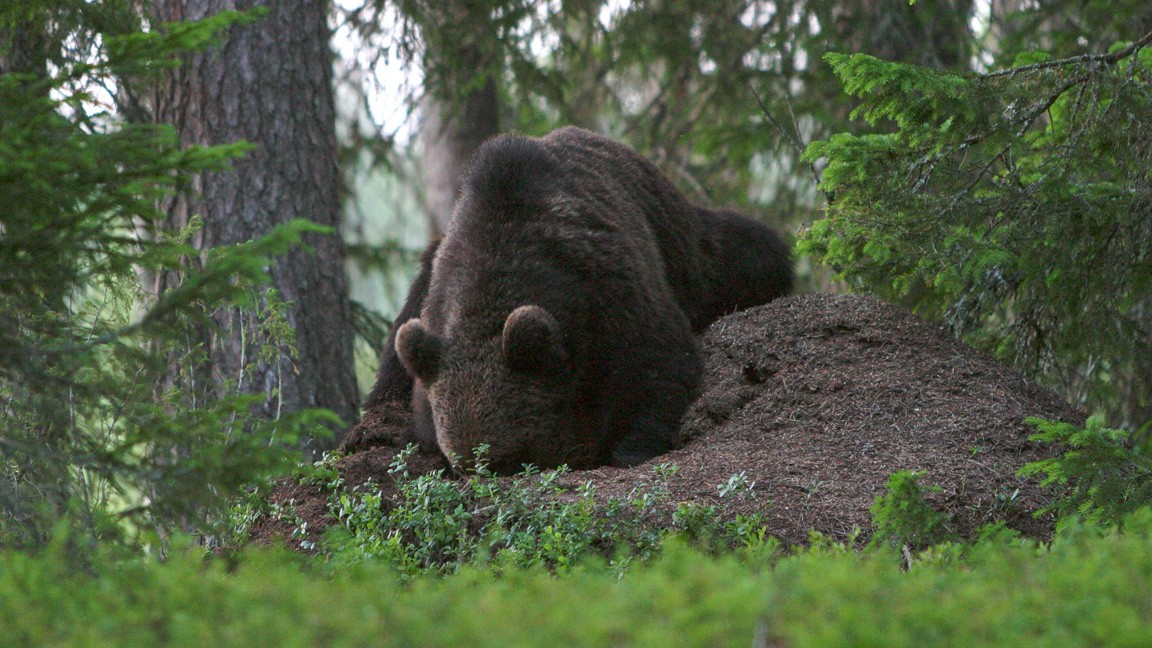Bears are fascinating creatures known for their strength and adaptability, and a significant aspect of their adaptability lies in their diet. Often described as omnivores, bears consume a wide variety of foods, ranging from succulent berries and grains to fish, insects, and even larger animals. Understanding “What Do Bears Eat” reveals a complex and opportunistic feeding strategy crucial for their survival.
The Broad Spectrum of a Bear’s Diet
The term omnivorous truly encapsulates the bear’s dietary habits. While they are often depicted as fearsome predators, a large portion of a bear’s diet consists of non-meat items. Berries and grains form a substantial part of their food intake, especially during seasons of abundance. They also eagerly consume fish, insects, birds, and small mammals, showcasing their versatility in exploiting available food sources. Bears are also known to scavenge carcasses, further expanding their dietary options and ensuring they capitalize on every opportunity for sustenance. In fact, a bear is even capable of taking down a large animal like an adult moose, demonstrating their predatory capabilities when necessary.
 Brown bear foraging for ants at an anthill, illustrating a part of their omnivorous diet.
Brown bear foraging for ants at an anthill, illustrating a part of their omnivorous diet.
When a bear successfully hunts larger prey like deer or moose, the signs are often evident. The carcass typically bears claw marks and significant mauling, particularly around the hindquarters. Bears dispatch their prey with bites to the neck or shoulders, sometimes even breaking the neck by twisting it. The surrounding terrain often reveals clear evidence of the struggle that took place. After a kill, bears exhibit a behavior of carefully covering their prey, either guarding it or returning to it repeatedly to feed.
Beyond Meat: Insects and Foraging
While capable hunters, bears also dedicate considerable time to foraging for insects. A telltale sign of a bear’s foraging activity is a destroyed anthill or tree stump. Bears use their powerful claws to tear into anthills, patiently waiting for the ants to swarm to the disturbed area before using their long tongues to lap them up. Interestingly, it can take ants up to a week to rebuild their anthill after a bear’s visit. Similarly, when searching for larvae beneath the bark of fallen trees, bears may strip tree trunks extensively. However, it is important to note that a broken anthill or tree stump isn’t definitive proof of bear presence in the area, as other animals may also cause similar disturbances.
Hunting Techniques and Eating Habits
Bears employ several hunting techniques to secure their prey. They commonly kill by biting the neck or back of their target. They are also known to use a powerful strike of their forepaw, which can be forceful enough to break an animal’s spine. Another common method involves biting the snout, leaving distinctive deep canine marks, with the distance between a bear’s canines ranging from 45 to 65 millimeters. Bites to the back of the neck are also used to kill prey.
When feeding on a carcass, bears typically start with the chest or hip regions, often consuming the entrails first. They have a unique method for preserving their kills. Bears will move the carcass to a suitable location and bury it under mounds of moss, twigs, and soil, sometimes using snow as cover in early spring. Occasionally, they may even store prey in running water. A large animal like a deer can sustain a bear for several days, and the area around the carcass will show numerous signs of bear activity, including droppings, resting spots, disturbed anthills, and branches or small trees that have been gnawed on.
In conclusion, the answer to “what do bears eat” is remarkably diverse. Their omnivorous diet and adaptable hunting and foraging strategies allow them to thrive in various environments, making them a truly resilient and fascinating part of the natural world.